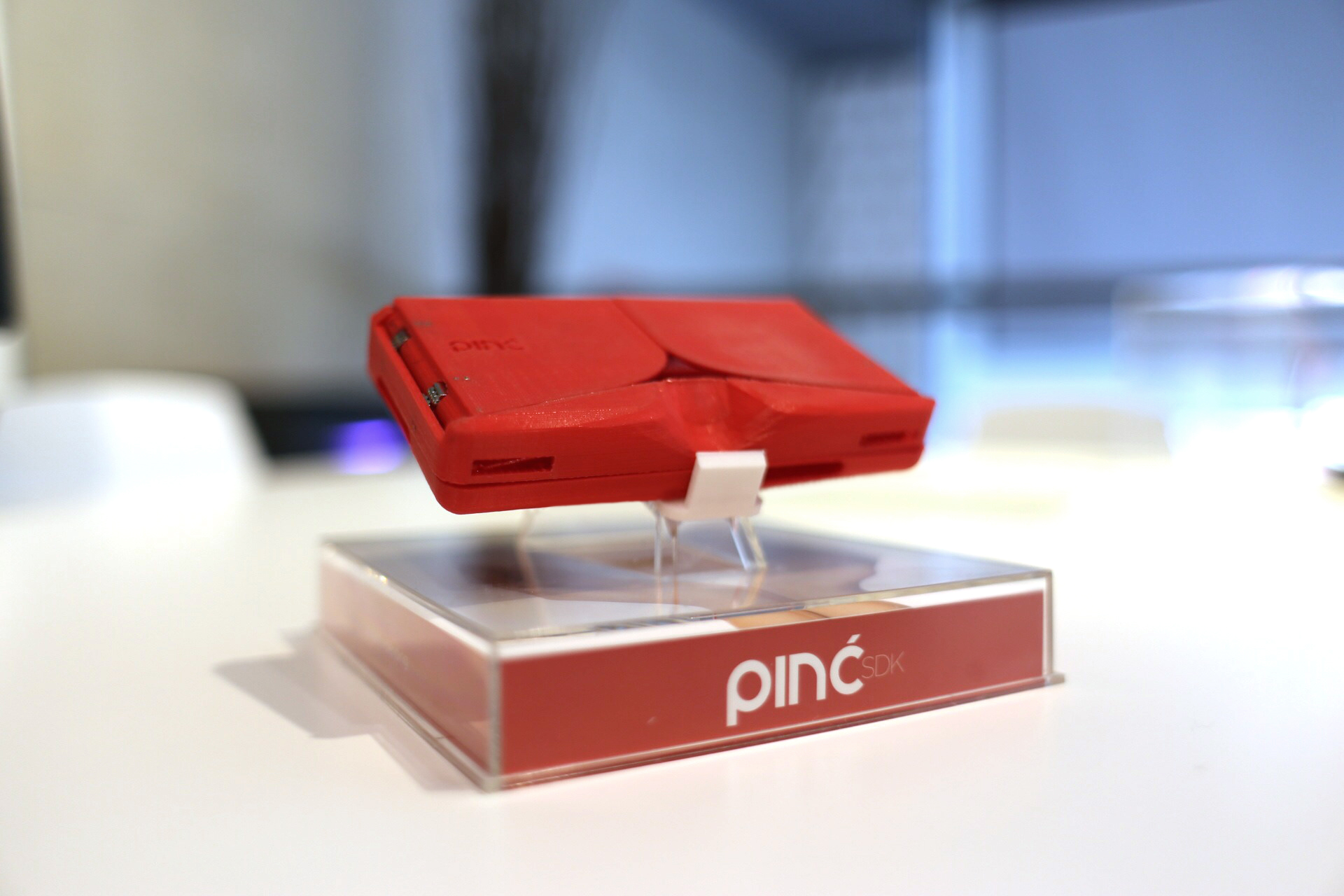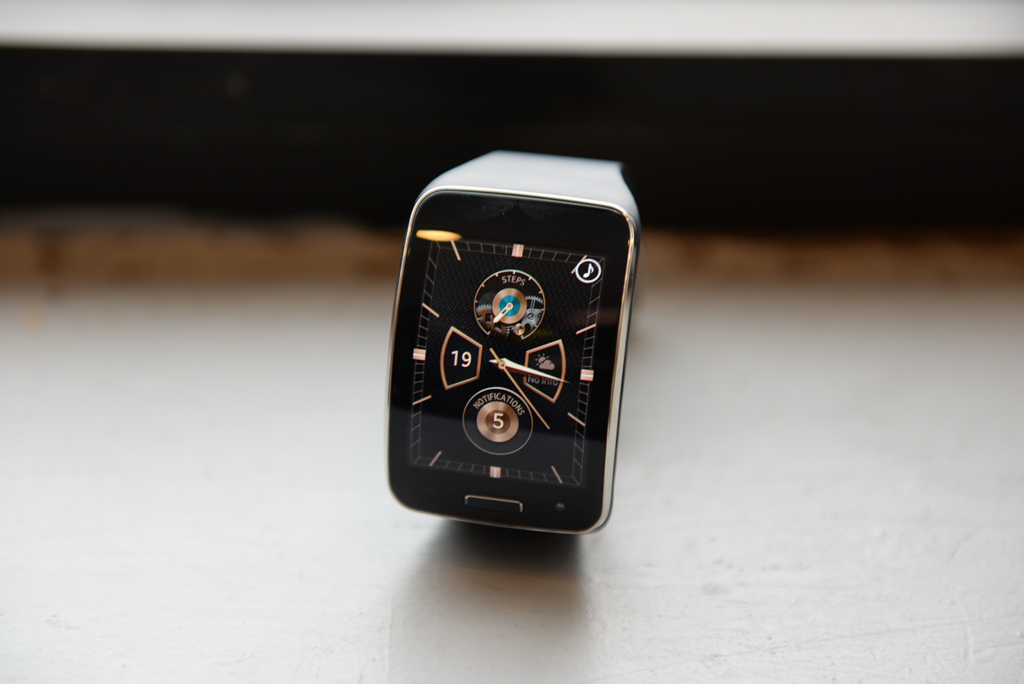
It’s that time of year: tech predictions! If you thought 2014 was the year of wearable tech, hang on to your connected hats. 2015 is going to see this space take one giant step forward with new device categories coming into their own, creating an emphasis on software. But before I make some predictions about wearable tech for the year ahead, I thought I’d be fair and judge myself on how well I did with my 2014 predictions published last December.
Last year I began my predictions indicating that the wearable war would be for your wrist, and suggested that the biggest fight would come from smartwatch makers. This year definitely saw a number of companies vying for arm real estate. Samsung launched three watches (well four if you count the Gear Fit); ASUS, LG and Motorola all came out with watches for Android Wear; and Apple even entered the race. And as expected, this year we saw a new breed of standalone wearables hit the market. Neptune shipped its Pine, Samsung introduced its Gear S and will.i.am unveiled his own standalone smartwatch, PULS.
Unfortunately for everyone, my prediction that smartwatch makers would struggle this year was right. Despite seeing some companies take steps in the right direction, including improving smartwatch aesthetics with devices such as the Moto 360, manufacturers struggled to clearly articulate why users should adopt this new category.
If you thought 2014 was the year of wearable tech, hang on to your connected hats.
But I may have overreached on my prediction that the emphasis on step counting would fade in the fitness wearable category. Despite some of the newer fitness wearables now sporting optical light sensors to track more robust metrics like heart rate, Fitbit and Jawbone activity trackers, which focus mainly on step counting, still dominate the space. I may have also missed the mark on the growth of the Google Glass community. Although I was right about how slow the smart glass space is moving in general, I’m not quite sure that we can say that the Google Glass Explorer population has increased much this year. In fact, we began to hear reports of Explorers and app developers give up on the device altogether.
We did see some fashion brands start to wet their feet in the wearable space, with Tommy Hilfiger, DVF, Opening Ceremony and Tory Burch just being a few. But more importantly, we saw technology companies putting a stronger emphasis on partnering with fashion brands and even launching devices on the runway, which is inline with what I had hoped 2014 would start to bring.
On the application side of wearable tech, this year Samsung, Pebble, and Google all made moves towards building a developer ecosystem for their wearables. Pebble launched its App Store, Samsung made a major push to get apps for its Tizen platform and the Android Wear catalogue continues to grow. But did apps take wearables from toys to tools as I had hoped? I’m not convinced.
Last year I made only seven predictions for the wearable space. This year I must either be crazy or overly confident, because I have double the number of predictions for you to judge me on. But don’t feel you need to wait until next year to chime in, let me know how you think I did in the comments below.
1. Smartphone-powered VR Solutions Will Bring Virtual Reality Mainstream
There is a reason why Facebook bought Oculus VR, a virtual reality company, for $2 billion dollars. A technology that has the capability of creating a net new reality has far reaching impacts on various aspects of our lives, the most obvious being gaming and entertainment, but also in enterprise and education. Virtual reality is not new (I remember my first VR experience at a kiosk at Canada’s Wonderland in the 90s). What is new is the ability for the average consumer to afford this technology thanks to cheaper and more powerful screens, sensors and processors.
Next year we are expecting to see Oculus finally release its consumer version of the Rift. Sony is also releasing its virtual reality headset, Morpheus, and Microsoft is rumoured to be coming out with its own. But I expect we will see the most traction in this space next year with VR headsets that utilize your smartphone, like Samsung Gear VR and Google Cardboard. Samsung’s Gear VR is currently only available in the U.S. and has a limited library of apps, but it is just getting started and its not the only choice. We are already aware of other smartphone-powered VR solutions coming to the market in 2015 including PinćVR. I believe it will be these types of VR devices that will finally make virtual reality a mainstream reality next year.
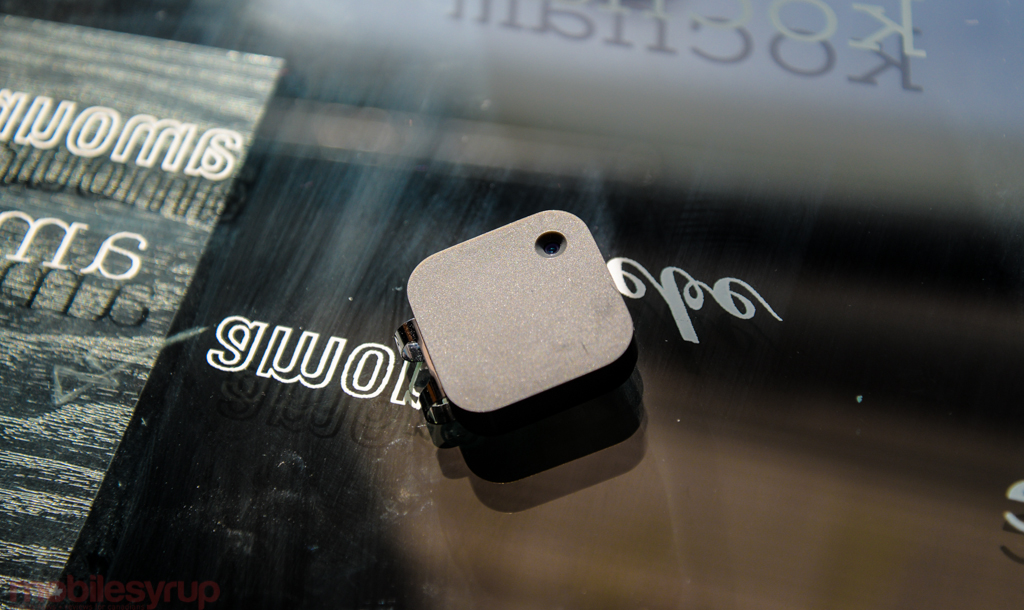
2. Wearable Cameras Break Out of Sports and Onto the Bodies of Super Sharers
GoPro’s IPO and Snapchat’s purchase of Vengeance Labs, makers of the widely popular camera glasses Epiphany Eyewear, are two strong indicators that wearable cameras are on the rise. Capturing what you are doing from your own POV is seeing the most success in extreme sports. But as these cameras become cheaper and more wearable, like the Narrative Clip or Pivothead’s sunglasses, I see these devices breaking free from the sports world and making their way to the mainstream, beginning with use by super sharers: YouTube celebs, bloggers and heavy Instagrammers. This will have an impact on existing social sharing platforms especially Instagram, Snapchat, and YouTube, and may even bring forth net new social networks specifically focused on this type of media.
In addition to capturing our life from our own perspective, new technologies like Bublcam will usher in 360-degree image and video capturing, which will be necessary to create content for more immersive experiences such as VR. This will be adopted first by the professionals but as access to this type of image capturing becomes cheaper it will catch on the same way panorama did with the average user.
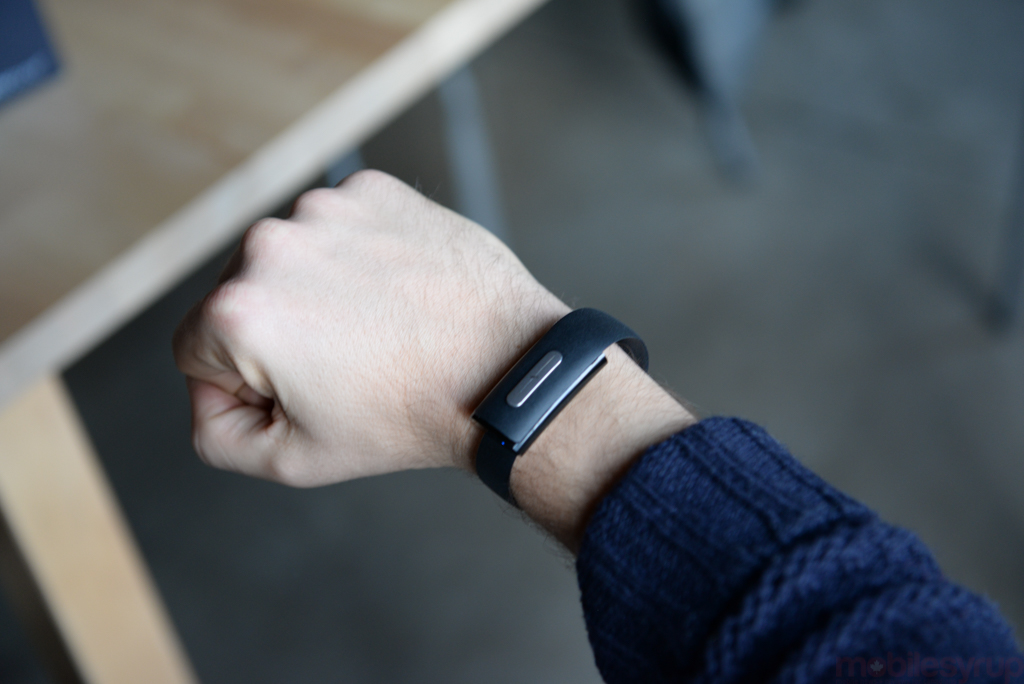
3. Identity Becomes the Killer App for Wrist-worn Wearables
Outside of fitness tracking, wearables have had a hard time finding its ‘killer app’. Notifications just don’t seem to be a compelling enough reason for people to buy smartwatches, and taking a picture with your Google Glass doesn’t justify the $1500 asking price. But a wearable that can remove the need for passwords and act as a form of payment? Now you’re talking!
Wearables, like Samsung’s Gear smartwatch line, already provide the ability to skip past the lock screen on your smartphone when your watch is in proximity. But next year we will begin to see wearables use biometrics to add an additional level of security, with devices that keep you authenticated as long as you are wearing them, such as the Nymi. Toronto-based Nymi promises to deliver persistent identity, which allows you to access any connected device without PINs, passwords, or keys, as long as you are wearing an active band. I expect that the Nymi will be just one example of wearables being used to interact with other connected things (or the Internet of Things) via Bluetooth next year.
But beyond a better password solution, the real opportunity for wearable identity is in payments. 2015 will introduce wearable payment solutions from the likes of Apple (Apple Pay), Samsung (PayPal) and Nymi (RBC & Mastercard). Expect to start to see the guy in front of you at Starbucks tap his watch to the point-of-sale instead of waiving his smartphone mid-to-late next year.
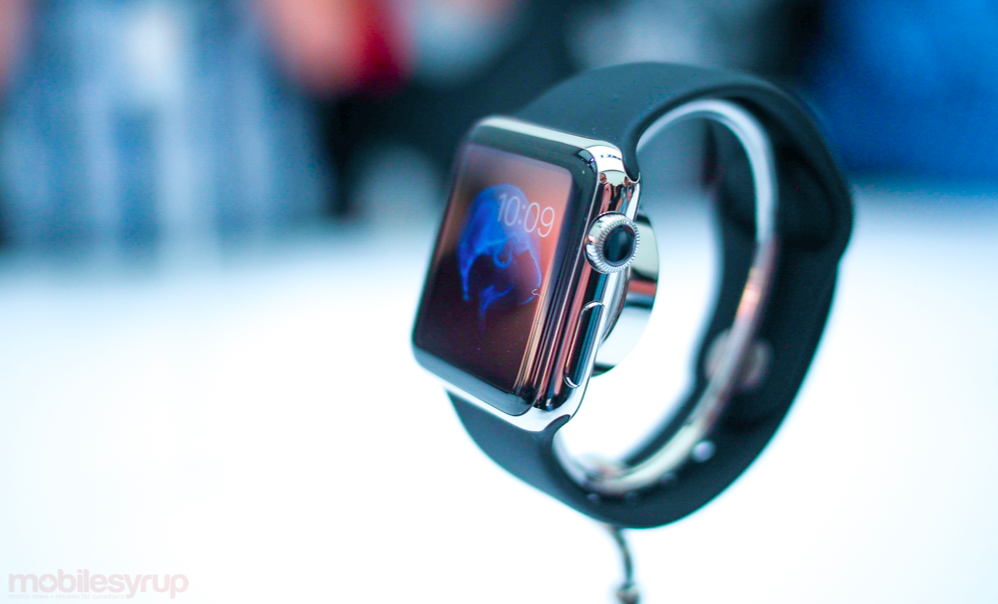
4. Apple Will Succeed With the Apple Watch, Because Apple
If there is one thing that Apple is known for, is its ability to master a technology category. They did it with the iPod, iPhone, and iPad, and will do it again with the Apple Watch. The Apple Watch will succeed because Apple is a lifestyle brand that knows how to market its devices to the masses. Wearables, smartwatches in particular, currently face a marketing problem; the time is ripe for Apple to do what it does best and tug at our heartstrings to make us realize that we need this type of product.
Of course, there are many other reasons why I think the Apple Watch will succeed. Apple’s emphasis on fashion in its craftsmanship and variety of styles and bands for the watch is one. Its integration with iOS, which has a loyal user base, and its thriving developer ecosystem are just a couple more. But perhaps the biggest reason is that Apple’s products have some cachet. If you recall, in the early days of the iPod, showing off those white earbuds was something of a status symbol. And to this day, the freelance elite shows up at a cafe with a Macbook over a PC. As traditional watches are worn as much for status as they are for time, a smartwatch that can offer the same stands a real chance to succeed.
I am not alone in my high expectations for Apple’s first wearable. Morgan Stanley recently forecasted that the Apple Watch will sell 30 million watches in 2015, which they argue is a rather conservative number. Apple’s success with its watch will not only benefit Apple, but will also help move the wearable space one giant leap forward for consumers, developers and investors alike by building confidence in this new wave of computing. In this way, this win is more for the industry than it is for one particular company, and it is much needed.
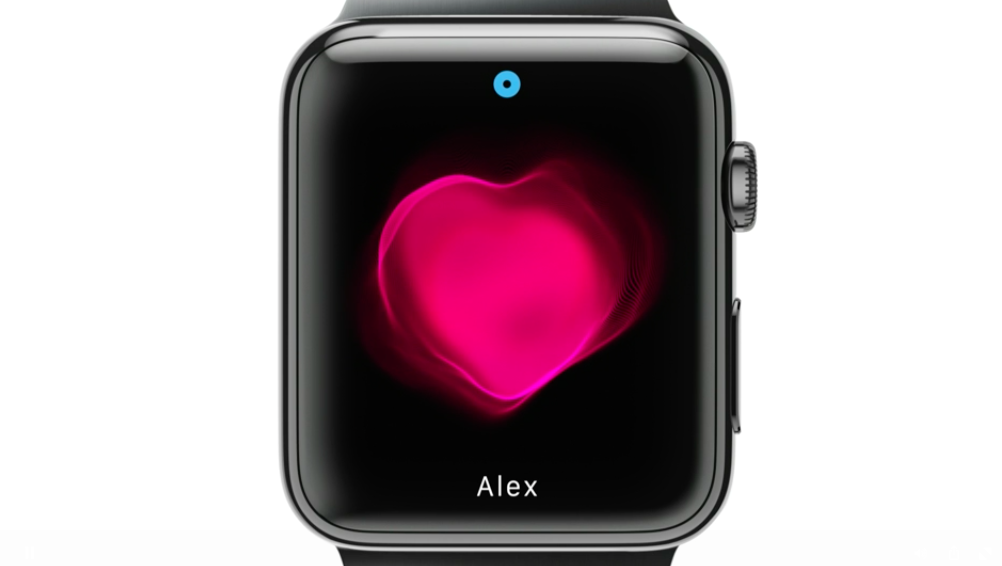
5. Apple’s Digital Touch Will Usher in a New Form of Communication
After watching the Apple Watch announcement, I left very excited about the idea of Apple’s Digital Touch. Drawing on your watch, or sending a heartbeat, a tap, or an animated emoji may sound gimmicky, but I believe Apple’s tapped into one of the more powerful opportunities wearable tech offers: the ability to further evolve communication.
Like the wave of computing before it (e.g. cellphones and texting), wearables will usher in new forms of communication. It’s with wearables that we will master voice and gesture and where we will also see the evolution of wordless and non-verbal communication, mainly through the use of haptics and LEDs.
I expect Digital Touch to be a competitive advantage for the Apple Watch for a short time until other smartwatch and wearable companies begin to adopt similar features. I can also see Apple’s Digital Touch features influencing the messaging app space on mobile.
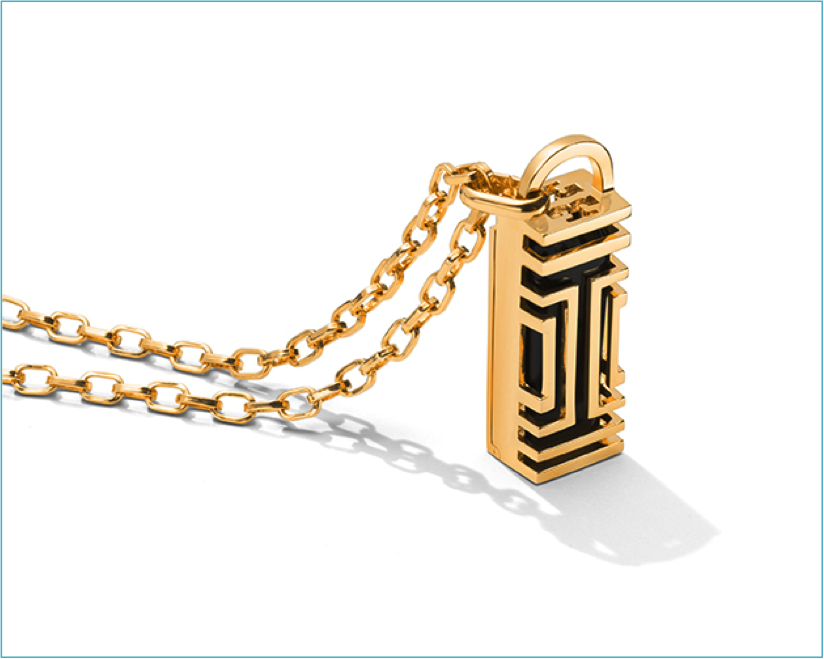
6. Fashion Brands Will Dominate Tech Headlines
Expect next year’s wearable tech buzz to blur the lines between fashion and technology so much so that you’ll have to scroll up to the top of the page to figure out if you are reading BetaKit or Vogue. Whereas 2014’s wearable tech news was dominated by technology players, 2015 will see even more heavy hitters from the fashion world throw their hat into the game, bringing the much needed ‘wear’ to ‘wearable tech’.
There were hints of fashion partnerships this year. Samsung worked with Diesel on a Diesel Black Gold band for its Gear S smartwatch, Fitbit worked with Tory Burch to create a line of accessories for its sensor, and Intel and Opening Ceremony unveiled the MICA (My Intelligent Communication Accessory) at Fashion Week. Next year its rumoured that we will see smartwatches from the likes of TAG Heuer, Swatch, and Fossil. Expect to also see a variety of smart jewellery like rings and bracelets available to keep you connected.
As demand for fitness trackers, smartwatches, smart jewellery and smart garments increase expect more fashion labels to partner with technology manufacturers to create connected wears, and for some of these partnerships to be spearheaded by the fashion brands themselves. Also expect to find this wearable tech for sale on fashion sites as much as they can be found on tech sites like Best Buy.

7. A New Wearable Sensor Will Democratize the “Lie Detector”
In 2013, I predicted that this year we would see a move away from fitness trackers that just counted steps towards devices that used more robust sensors. This year, we saw optical light sensors introduced on devices like the Moto 360 to measure our heart rate. But where 2014 brought the heart rate monitor to wearables looking at our physical state, 2015 will introduce the Galvanic Skin Response (GSR) sensor to measure our emotions.
A little science lesson, kids: GSR sensors measure the electrical conductance of your skin, which varies based on moisture level (or sweat). As sweat glands are controlled by your sympathetic nervous system (e.g. the system that owns fight-or-flight), GSR can detect states of arousal, which can be correlated to emotional states. You may best know GSR as one of the sensors used in a lie detector test.
A smart ring from Moodmetric is already using this sensor to monitor and log your emotional response so that you can identify patterns and help you calm down. Sensoree’s GER Mood sweater uses this sensor to identify your emotions and display how you are feeling as a colour to the outside world. And GSR sensors can be found on some of the latest fitness trackers including the Jawbone UP3 and the Microsoft Band.
I expect next year we will see GSR-equipped wearables be used to help us communicate how we are feeling to the outside world, almost like an extension of body language. I also see fitness and health applications begin to add emotional state tracking into the mix with steps, heart rate and respiratory.
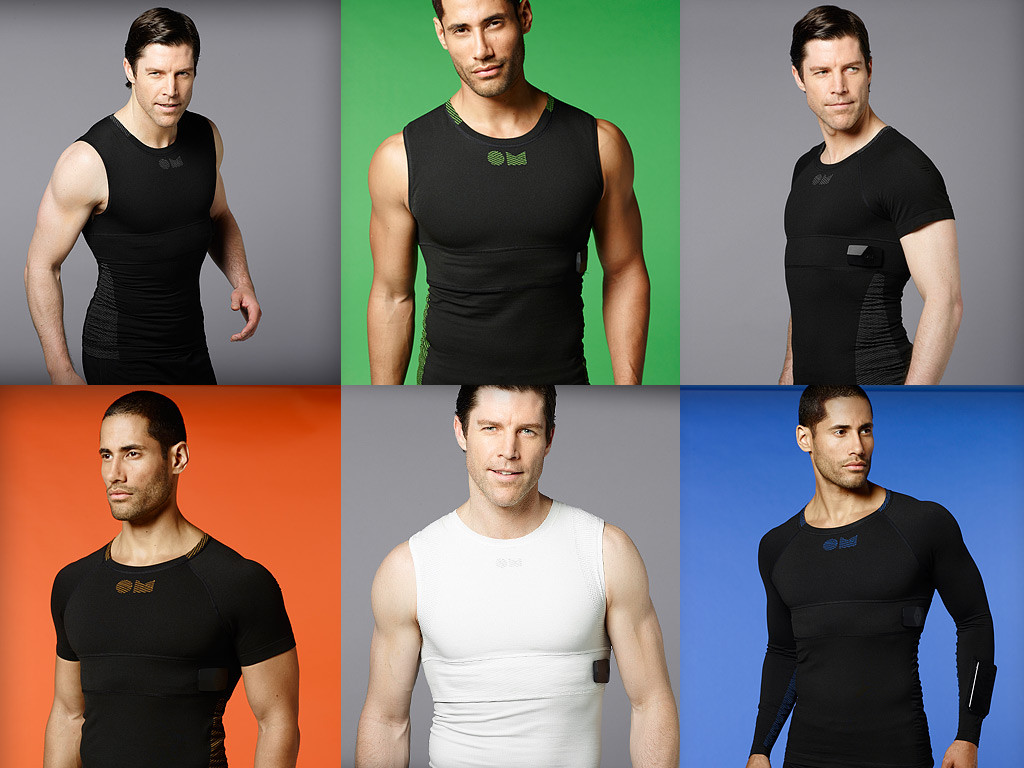
8. Smart Garments Gain Traction at the Gym
Wearables are not a new thing in the gym. Athletes and hardcore gym goers are pretty used to wearing chest straps and running watches to track performance and meet goals. But wearing a watch or a chest strap can be cumbersome and only provides you with so much data. Never fear gym bunnies, the smart shirts and shorts are coming! Smart wear offers the ability to track biometric data like heart rate, breathing rate, and activity, just as easy as putting on your gym clothes.
Currently there are two companies dominating the smart garment space, OMSignal and Hexoskin, both from Montreal. Hexoskin’s smart shirts have been used by the likes of Olympic athletes and space agencies, while OMSignal just recently did a line of connected shirts for Ralph Lauren at the US Open. Both companies are already shipping smart wear, but in 2015 new entrants like Athos are expected to join the party.
Gartner recently published a report that shows smart clothing going from 0.1 million global shipments to over 10 million this year, with this category becoming the primary fitness wearable category over smart bands and watches by 2016.
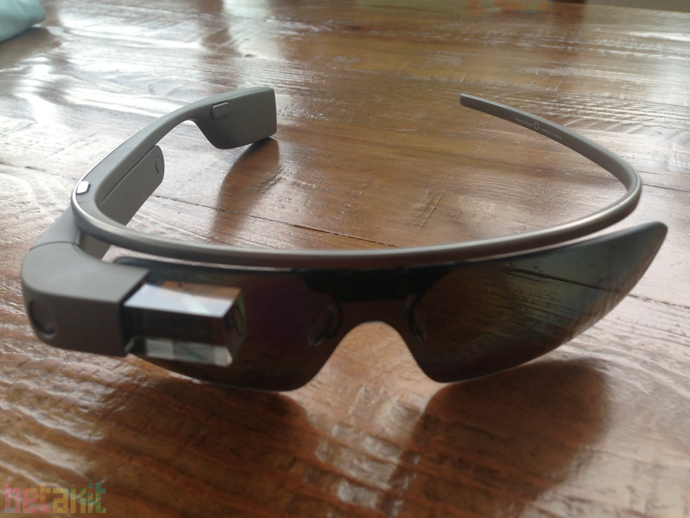
9. Google Glass Rises from the Ashes in Enterprise (and Travel)
There is no question that Google Glass has had a rough ride this year. Google saw some of its most loyal Glass Explorers give up on wearing the heads-up display (HUD), and developers have even begun to wane in their interest to build software for the device. Questions around Google’s commitment to its first wearable also arose, as hardware and software updates slowed and the much-anticipated launch of Google Glass never happened.
But this year we did see one important move from Google: the launch of the Glass at Work program, which certified app developers who were creating applications for Glass to be used in enterprise. Currently this program has ten companies. Among them is APX Labs, which raised $10 million dollars in Series A this year for Skylight, its hands-free, real-time enterprise data solution. With Crowdoptics and Augmedix also part of this program, we are sure to continue to see the use of Google Glass in enterprise, including in the field, at the hospital, and as a broadcasting tool in 2015.
In addition to enterprise, I also see Google Glass re-packaged for the traveller. Google has all the right ingredients to make Glass a must-have travelling tool. Its recent purchase of Quest Visual, makers of the augmented reality translator WordLens, is a true sign that Google may be focusing on this angle for its HUD. Speak to any Explorer and they will cite taking pictures, getting turn-by-turn directions and real-time translation with WordLens as being the most impactful features of the device. In addition, we are seeing hospitality leaders like Starwoods and Virgin Atlantic begin to explore the use of Glass for reservations and check-ins.
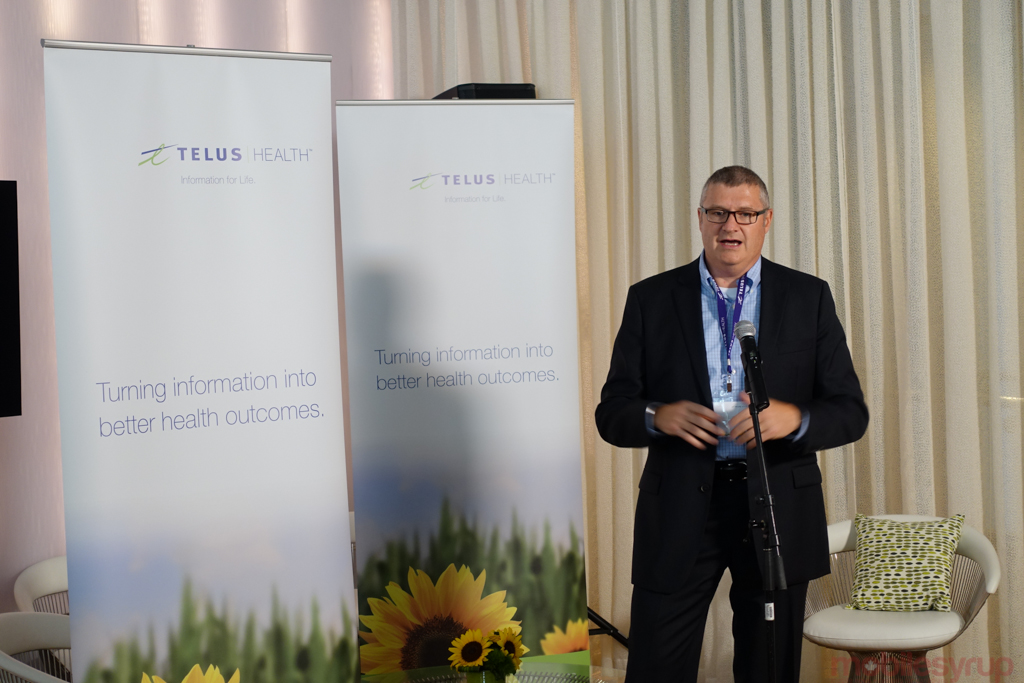
10. Healthcare and Sports Will See Significant Disruption from Wearables (But the Average Consumer Will Still Be Buried in Data)
The sports and health sectors stand to change the most from wearable technologies equipped with sensors that gather biometric information of its wearer on a continued basis. We have already seen companies such as Catapult and adidas move in on the athlete to quantify team performance. Expect next year to hold a number of announcements from the major leagues as they begin to use wearable devices to create winning teams, as well as to provide fans new ways to engage and watch them in action.
Within healthcare, I see 2015 presenting new opportunities in insurance to leverage data from users to provide discounts on premiums. We may even start to see wearables be subsidized for this use. Of course, data ownership and privacy will be major concerns around any such program. From a medical standpoint, we can also expect wearables to be used as tools by doctors and hospitals that are willing to experiment with them, especially devices like smart glasses that improve productivity. But I do not expect doctors to officially use biometric data collected by wearables of their patients for diagnosis. I do believe that the relationship between the doctor and patient will continue to change in 2015 as consumers begin to understand their body better, putting them on a different footing when they enter their doctor’s office at their next appointment.
On the consumer side, this year was definitely the year of the fitness tracker, as Fitbit and Jawbone dominated the wearable space with step-counting tech. Most of the wearables today do a good job at pushing the problem of “big data” down to the consumer, presenting users with stats and numbers without taking them much further in deriving insights and recommendations to help them change their lives. I fear that despite the introduction of more robust data points next year, we will still not see wearable devices and their companion apps put all the pieces together to truly make an impact. That being said, next year will see developers begin to use consolidated health platforms like Apple Healthkit and Google Fit, which will put us on the road towards realizing true wearable health 2.0.
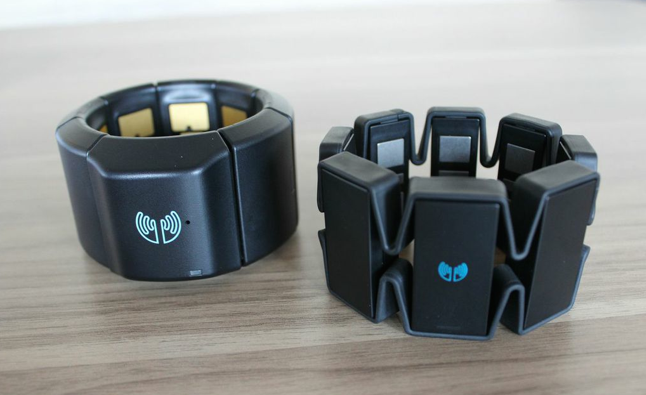
11. Developers Enter the Wearable Space But Like Mobile Struggle to Make Money
If 2014 had a lot of hardware, then expect 2015 to be a year focused on wearable software, especially for smartwatches and VR. New app stores will emerge and developers will fill them.
Enterprise apps seem to be the most lucrative opportunity for developers and development shops including solutions that analyze data and increase productivity. Salesforce’s wearable developer pack, which helps developers connect wearable apps to the Salesforce1 platform, is just one indication that these types of applications are expected.
But as devices begin to ship, including the Myo, Nymi, and Apple Watch, new opportunities will arise for developers to create applications for the end consumer too. I would expect to see some familiar apps from brands you are used to using on your phone hit the VR and smartwatch app stores next year. However, like mobile, developers who publish their apps direct to consumers will struggle to find revenue. In fact, many of the wearable app stores which are live today don’t currently support paid applications, although this feature is on the roadmap. But even when paid apps are feasible, I expect that users will treat wearable apps in the same way that they have in the mobile space where free and freemium models dominate.
12. Most Marketers and Advertisers Will Lump Wearables in with their Mobile Strategy
Like all new waves of computing, a massive marketing and advertising opportunity exists. I’d argue that the past few waves have been pretty easy for marketers and advertisers, as the move from web to mobile to tablet has mainly seen shrinking ads and responsive landing pages from screen to smaller screen. The leap from mobile to wearable will be more challenging, especially as marketers are faced with leveraging screenless touch points with their users. I truly believe that brands, marketers, and advertisers that have a “wearables first” mentality will end up succeeding in this space.
That being said, next year I expect marketers and advertisers to lump wearables in with their mobile strategy – seeing smartwatches and smart glasses as smaller screens they can push even smaller ads to. Expect to see banners ads, pop-ups, splash pages, and an over-use of push notifications on your wearable from marketers that see these devices only as an extension to their existing mobile marketing plan.
On this prediction I sincerely hope I am wrong.

13. Fears Around Privacy and Security Will Continue to Grow (for Wearables and in General)
Think the Sony “The Interview” hack and inappropriate release of JLaw’s boobs was scary? Just wait until our biometric data is released to the public. I have no doubt that this and many other types of cyberattacks are coming in the next couple of years.
Wearables may be too ‘small fry’ for hackers next year, but this won’t stop the fear around privacy and security for these devices from growing amongst the masses. Privacy and security will continue to be a major conversation, and in some cases a deal breaker for many people to adopt wearable technology, especially those with newer, more robust sensors like EMG and GSR.
Wearable hardware and software makers will need to communicate clearly to their users what data they are collecting, who owns it, and how it will be used in order to calm concerns. Those that take an opt-in first approach will win out. I expect to see the beginnings of standards and regulations be put together within enterprise and perhaps even on the regulatory level next year to tackle these concerns.
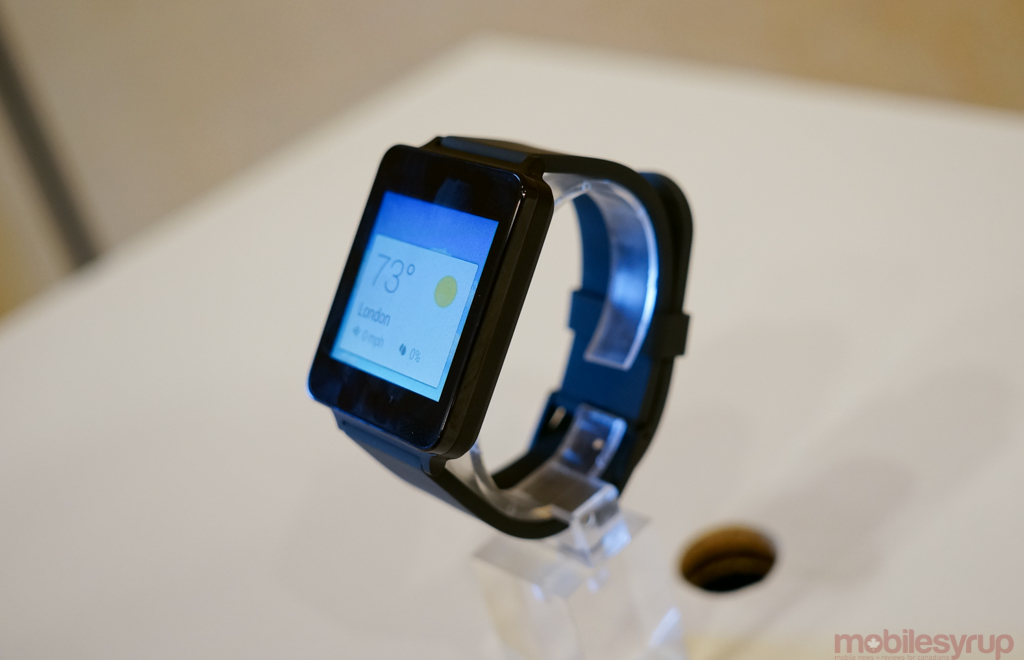
14. The Promise of Wearables Will Continue to Blur with Reality
One of the biggest takeaways for me in looking back at this year in wearable tech is how easily we blurred the lines in our storytelling around the realities of what this technology can do now and what it promises to deliver in the (near) future.
With all new technology, it is critical to create a vision as to where it is going. Wearables are still mostly in the “pre-iPhone” stage and to keep the momentum and support behind this new wave of computing growing it is important that everyone understands where we are going. But what is happening is that we are hearing about wearables concepts, research projects, crowdfunding ideas and launched devices in the same breath, and this ends up confusing the consumer, and more importantly, sets unrealistic expectations for purchased devices that cannot (yet) be met.
I don’t expect this hype to die down next year. But I do expect a couple of returns in the new year of devices that were purchased more on the promise than the reality.
This article originally appeared on our sister site, BetaKit
MobileSyrup may earn a commission from purchases made via our links, which helps fund the journalism we provide free on our website. These links do not influence our editorial content. Support us here.

